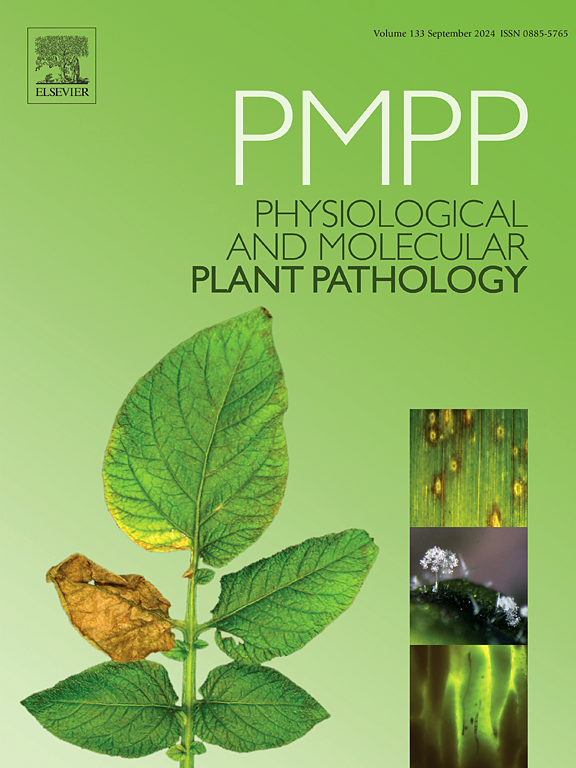Quantitative analysis of pathogenesis-related protein expression in Gossypium hirsutum L. to elicitor-induced resistance against cotton leaf curl disease and predicted in-silico protein-protein interactions
IF 2.8
3区 农林科学
Q2 PLANT SCIENCES
引用次数: 0
Abstract
Systemic acquired resistance (SAR) can offer an effective management strategy for plant diseases. Pathogenesis-related (PR) gene expression was investigated in Gossypium hirsutum plants in response to SAR induced by the exogenous application of salicylic acid, jasmonic acid, and benzothiadiazole as elicitors, followed by inoculation with Cotton leaf curl Multan virus (CLCuMuV). Expression of cotton, PR genes encoded on multiple loci were determined by qPCR. Primers were designed based on sequence regions conserved in each group of aligned gene targets in the annotated Gossypium hirsutum reference genome assembly. While designing primers for gene expression analysis, the copy number variation (CNV) was mitigated using bioinformatics and alignment tools to craft primers specific to their target genes. Gene expression of pathogenesis-related proteins such as PR1, PR4, PR5, β 1,3 glucanase, and chitinase was quantified by qPCR. In silico protein interactions were predicted between the five PR and begomoviral proteins using Phyre 2. The results indicated that all the PR genes were expressed on the 2nd date of analysis. The exogenous benzothiadiazole (BTH) application significantly increased all PR gene expression and suppressed the virus infection. The application of BTH after virus inoculation significantly enhanced systemic acquired resistance, which indicates that virus infection initially triggered SAR, and subsequent application of elicitor, i.e., BTH, further facilitated the signal transduction for the expression of PR genes. In silico interactions predicted significant interactions between CLCuMuV coat protein (AV1) gene and Chitinase, PR1, PR5, whereas the replication-associated gene, AC1, interacted with PR1. Results indicate that cotton PR genes suppress the CLCuMuV infection in G. hirsutum plants. The identified PR genes could be exploited to enhance resistance through genetic transformation in cotton plants to control CLCuMuV.
求助全文
约1分钟内获得全文
求助全文
来源期刊
CiteScore
4.30
自引率
7.40%
发文量
130
审稿时长
38 days
期刊介绍:
Physiological and Molecular Plant Pathology provides an International forum for original research papers, reviews, and commentaries on all aspects of the molecular biology, biochemistry, physiology, histology and cytology, genetics and evolution of plant-microbe interactions.
Papers on all kinds of infective pathogen, including viruses, prokaryotes, fungi, and nematodes, as well as mutualistic organisms such as Rhizobium and mycorrhyzal fungi, are acceptable as long as they have a bearing on the interaction between pathogen and plant.

 求助内容:
求助内容: 应助结果提醒方式:
应助结果提醒方式:


